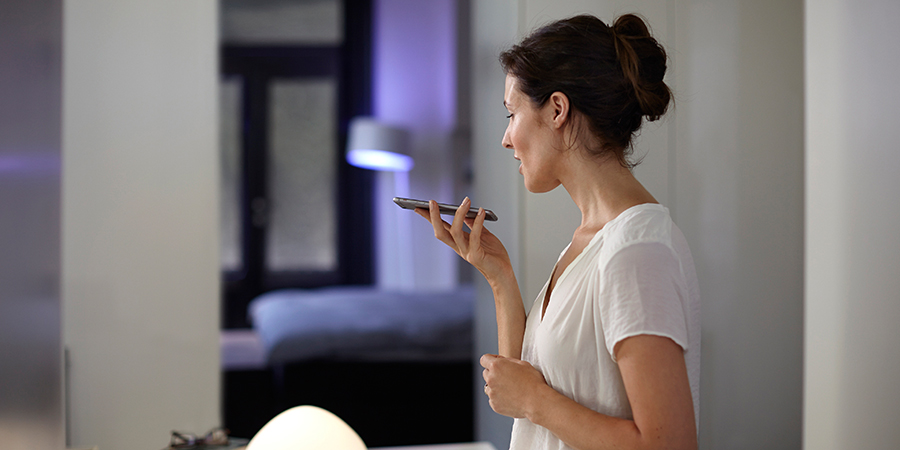The idea of Smart Home was created to provide people with more comfort in life by simplifying routine tasks. The annoying work is taken over by intelligent components or a complete smart home system.
The devices are centrally operated and, at the same time, have the capacity to communicate with each other. The result is a fully connected home, where various automatisms are activated depending on single components.
In this field, the smart home market is expected to become significantly stronger in the coming future.
READ MORE 5 Advantages of living in a Smart Home
Voice Control
What we have seen only in Hollywood movies, is a reality today. Home control is now possible using voice commands.
In the past, apps and touch-screen devices were used to manage smart home systems. However, nothing is as easy as voice control. Besides, it is constantly developing. AI systems controlled by speech learn on their own and become more and more precise.
Due to continuous context analysis, they understand better what the user say. As the result, a smart loudspeaker performs tasks increasingly reliable.
Intelligent Control
In order to simplify management of complex situations, some smart home systems include so-called situation models. Thereby, a case is connected to one or several devices using a particular rule.
As an example, if it starts raining, the system retracts awning. For a TV night, several applications can be activated at the same time at a touch of a fingertip: the lighting atmosphere is changed, roller shutters are lowered, and the TV set is started. In the morning your favorite music sounds softly from the loudspeakers after the alarm clock rings. The lamps light up, the bathroom is already preheated, and the coffee machine in the kitchen is already on.
The latest technological advances enable even more: smart home is now able to learn the habits of its residents and behave according to their wishes.
Using smartphone GPS data of the house inhabitants, it recognizes where they are currently staying. As soon as they are on the way home, it turns the heating system up.
Due to Smartwatch on the wrist, a smart home system always knows, in which room each family member currently is and controls light and music accordingly.
READ MORE Home, Smart Home: Top 5 Technologies
Security
Burglary prevention and security will remain the main user trends. With remote access, you can keep an eye on your home even when you’re away on holiday.
Smart security cameras, smoke detectors, and water sensors are already in great demand.
The newest generation of smart home systems goes one step further.
When it gets dark outside, a smart home system switches lamps on and off, raises and lowers the shutters, plays sounds from loudspeakers (e.g. dogs barking). Some smart devices have a capacity to monitor air quality in the house. If the volume of carbon dioxide rises, it alerts the inhabitants.
Remote health monitoring
More and more older people wish to stay independent as long as possible. Smart home provides seniors and their family members with a necessary support.
Motion sensors, door and window contacts allow family members, friends and nursing service to timely detect abnormalities, e.g. in case the person has fallen, so the care staff can react quickly.
So-called biosensors attached to the body of a person monitor vital signals (measure heart rate, oxygen level, blood pressure, etc.) and send the data to the receiver in the house. The receiver is connected to the hospital through a telecom network. The software evaluates data and sends an emergency message to a nurse on duty or a doctor. If necessary, the patient will be picked up and brought to the hospital.
READ MORE Remote Patient Monitoring: Health Care at Home
Compatibility
Currently, there are several non-compliant standards. The list of protocols required for a smart home is long: WLAN, Bluetooth Smart LE, ZigBee, etc.
The users of one smart home system normally can use only features and solutions of its’ provider.
The consumers expect, however, that all devices at home are mutually compatible. For example, an outdoor siren recognizes when motion detector gives the alarm. As soon as a window is open, radiator thermostat turns the heating down, and the roller shutters are automatically activated with the beginning of sunset. Insular solutions usually do not allow cross-functional scenarios across any devices.
It is therefore forecasted that non-proprietary and flexibly extendable systems for smart home will prevail on the market.
With this kind of platforms, the customers will be no longer bound to just one manufacturer.
Thus, a connected home will provide users with an added value and become a truly great experience for them.
Find out more Qulix Smart Home Application Development

